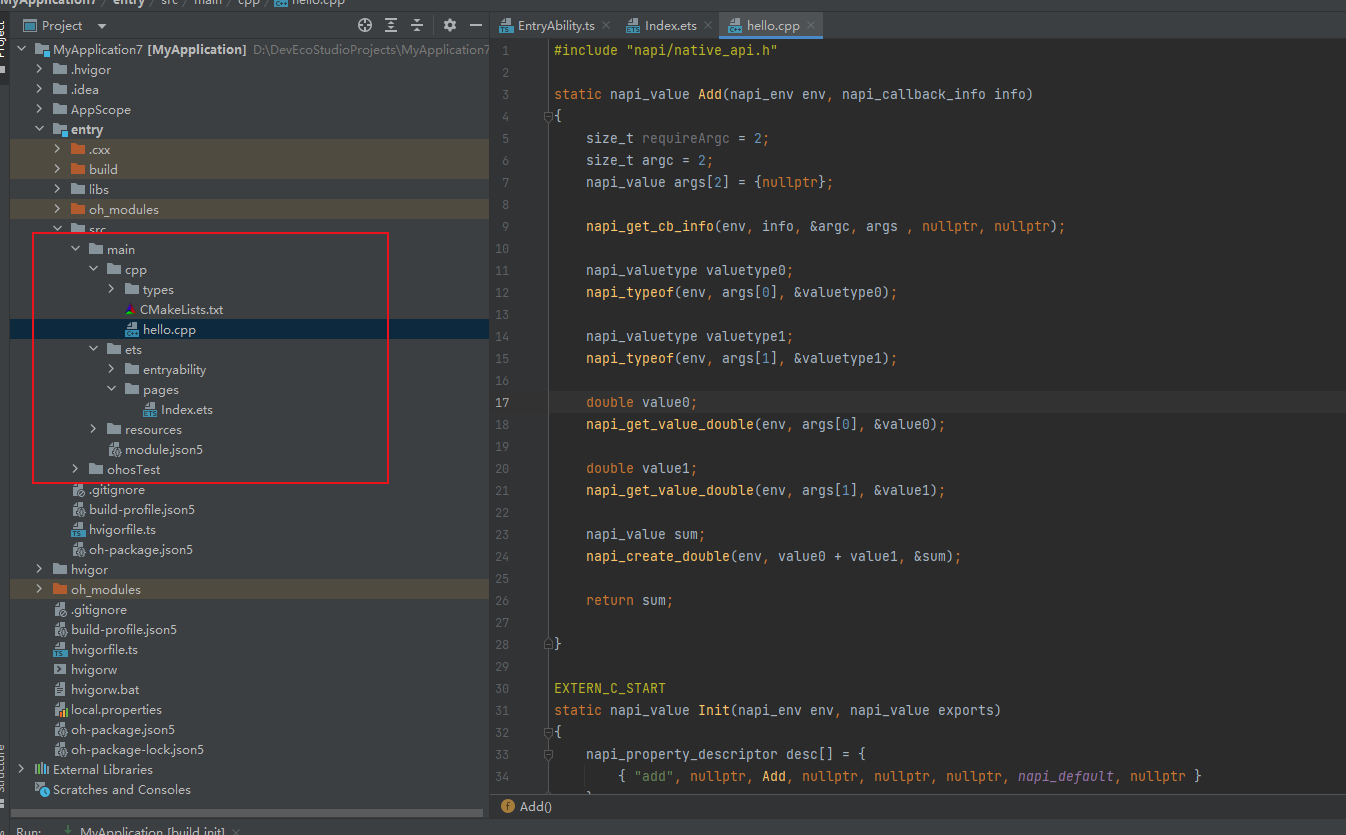harmony 鸿蒙Vibrator Development (C/C++)
Vibrator Development (C/C++)
When to Use
You can set different vibration effects as needed, for example, customizing the vibration intensity, frequency, and duration for button touches, alarm clocks, and incoming calls.
For details about the APIs, see Vibrator API Reference.
Function Description
| Name | Description |
|---|---|
| OHOS::Sensors::OH_Vibrator_PlayVibration(int32_t duration, Vibrator_Attribute attribute) | Configues the vibrator to vibrate continuously for a given duration. |
| OHOS::Sensors::OH_Vibrator_PlayVibrationCustom(Vibrator_FileDescription fileDescription, Vibrator_Attribute vibrateAttribute) | Configues the vibrator to vibrate with the custom sequence. |
| OHOS::Sensors::OH_Vibrator_Cancel() | Stops the vibration. |
Vibration Effect Description
Currently, two types of vibration effects are supported.
Fixed-Duration Vibration
Only a fixed duration is passed in, and the device vibrates based on the default intensity and frequency.
Custom Vibration
Custom vibration enables you to design desired vibration effects by customizing a vibration configuration file and orchestrating vibration forms based on the corresponding rules.
How to Develop
- Create a native C++ project.

- Before using the vibrator on a device, you must declare the ohos.permission.VIBRATE permission. For details, see Declaring Permissions.
"requestPermissions": [
{
"name": "ohos.permission.VIBRATE",
},
]
- Add the dynamic dependency libraries into the CMakeLists.txt file.
target_link_libraries(entry PUBLIC libace_napi.z.so)
target_link_libraries(entry PUBLIC libhilog_ndk.z.so)
target_link_libraries(entry PUBLIC libohvibrator.z.so)
- Import modules.
#include <sensors/vibrator.h>
#include "napi/native_api.h"
#include "hilog/log.h"
#include <thread>
#include <fcntl.h>
#include <unistd.h>
#include <sys/stat.h>
- Define constants.
const int GLOBAL_RESMGR = 0xFF00;
const char *TAG = "[NativeVibratorTest]";
constexpr int32_t TIME_WAIT_FOR_OP = 2;
- Configure the vibrator to vibrate continuously for a given duration.
static napi_value Vibration_Test(napi_env env, napi_callback_info info)
{
Vibrator_Attribute vibrateAttribute;
vibrateAttribute.usage = VIBRATOR_USAGE_ALARM;
int32_t ret = OH_Vibrator_PlayVibration(0, vibrateAttribute); // Configure the vibrator to vibrate continuously for a given duration.
OH_LOG_Print(LOG_APP, LOG_INFO, GLOBAL_RESMGR, TAG, "Vibration successful");
if (ret != PARAMETER_ERROR) {
return nullptr;
}
std::this_thread::sleep_for(std::chrono::milliseconds(TIME_WAIT_FOR_OP));
ret = OH_Vibrator_Cancel(); // Stop vibration.
if (ret == 0) {
return nullptr;
}
}
- Configure the vibrator to vibrate with the custom sequence.
static napi_value VibrationCustom_Test(napi_env env, napi_callback_info info)
{
int32_t fd = open("/data/test/vibrator/coin_drop.json", O_RDONLY);
OH_LOG_Print(LOG_APP, LOG_INFO, GLOBAL_RESMGR, TAG, "Test fd:%{public}d", fd);
struct stat64 statbuf = { 0 };
if (fd == 0) {
close(fd);
return nullptr;
}
if (fstat64(fd, &statbuf) == 0) {
Vibrator_FileDescription fileDescription = {
.fd = fd,
.offset = 0,
.length = statbuf.st_size
};
Vibrator_Attribute vibrateAttribute = {
.usage = VIBRATOR_USAGE_RING
};
int32_t ret = OH_Vibrator_PlayVibrationCustom(fileDescription, vibrateAttribute); // Configure the vibrator to vibrate with the custom sequence.
OH_LOG_Print(LOG_APP, LOG_INFO, GLOBAL_RESMGR, TAG, "Vibratecustom successful");
bool isSuccess = ((ret == 0)||(ret == UNSUPPORTED));
if (isSuccess == true) {
close(fd);
return nullptr;
}
}
std::this_thread::sleep_for(std::chrono::milliseconds(TIME_WAIT_FOR_OP));
close(fd);
OH_Vibrator_Cancel(); // Stop vibration.
}
- Introduce the NAPI APIs to the index.d.ts file in types/libentry.
export const vibration_Test: () => number;
export const vibrationCustom_Test: () => number;
- Write JavaScript test cases to test the APIs.
你可能感兴趣的鸿蒙文章
harmony 鸿蒙Sensor Development (C/C++)
harmony 鸿蒙Sensor Development (ArkTS)
harmony 鸿蒙Introduction to Sensor Service Kit
harmony 鸿蒙Vibrator Development
0
赞
- 所属分类: 后端技术
- 本文标签:
热门推荐
-
2、 - 优质文章
-
3、 gate.io
-
7、 openharmony
-
9、 golang